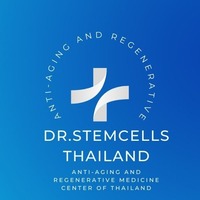Seborrheic Dermatitis

Seborrheic Dermatitis: Symptoms, Causes, and Treatment
What is Seborrheic Dermatitis?
Seborrheic dermatitis is a common, chronic, or relapsing inflammatory skin condition that affects oily (sebaceous) areas of the body such as the scalp, face (around the nose, eyebrows, ears), and trunk. It is characterized by red, itchy, flaky, and sometimes greasy patches of skin.
Symptoms
- Flaking skin or dandruff on the scalp.
- Patchy or flaky white or yellow scales on top of oily skin areas.
- Redness and inflammation in affected areas.
- Itching, burning, or discomfort in severe cases.
- The rash may appear lighter or darker depending on skin tone.
Causes
- The exact cause is not completely understood but involves a combination of factors:
- Overgrowth of Malassezia Yeast: A fungus normally found on the skin, which triggers an inflammatory immune response when it proliferates excessively.
- Genetics and Environmental Factors: Including stress, cold dry weather, hormonal changes, and use of harsh chemicals or detergents.
- Skin Barrier Dysfunction: Leading to increased susceptibility.
- Not contagious and not related to poor hygiene.
Common Triggers
- Stress and illness.
- Cold, dry weather or seasonal changes.
- Harsh hair styling products and soaps.
- Certain medications such as lithium and interferon.
Treatment
- Topical Antifungals: Such as ketoconazole or ciclopirox to reduce Malassezia yeast populations.
- Medicated Shampoos: Containing antifungal agents or keratolytics like salicylic acid for scalp involvement.
- Topical Corticosteroids and Calcineurin Inhibitors: To reduce inflammation during flare-ups, used short-term to minimize side effects.
- Good Skincare Practices: Gentle cleansing, moisturizing, avoiding irritants, and maintaining skin barrier health.
- Lifestyle Management: Reducing stress, protecting skin in harsh climates, and avoiding known triggers.
Summary
Seborrheic dermatitis is a manageable, non-contagious inflammatory skin condition primarily caused by overgrowth of Malassezia yeast and affected by genetic and environmental factors. Treatment involves antifungal and anti-inflammatory therapies combined with good skincare and trigger avoidance.
Consult with Our Team of Experts Now!
For diagnosis and personalized treatment of seborrheic dermatitis, consult dermatology specialists who can tailor therapies to control symptoms and prevent flares.
References:
Polaskey M, Woolhiser E. The Global Prevalence, Pathogenesis, and Treatment of Seborrheic Dermatitis: A Systematic Review and Meta-Analysis. JAMA Dermatol. 2024 Aug;160(8):846-855. doi:10.1001/jamadermatol.2024.1987. Available at: https://doi.org/10.1001/jamadermatol.2024.1987















